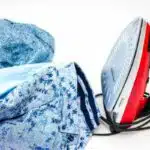Ironing is a necessary task for those who wish to maintain a sharp and professional appearance. However, it can be a daunting task for many people who struggle with the proper techniques and methods. The consequences of making ironing mistakes can range from minor inconveniences such as creases in clothing or wasted time, to more severe damages such as burnt fabric or ruined garments.
To avoid these pitfalls, it is important to understand the common mistakes that people make while ironing and how they can be avoided. In this article, we will explore some of the most common ironing mistakes and provide practical tips on how to prevent them. Whether you are an experienced ironer or just starting out, this guide will help you achieve a polished and professional look without damaging your clothes or wasting precious time.
Choosing The Right Iron For Your Needs
Ironing clothes is an essential task in maintaining a polished and put-together appearance. However, ironing mistakes can ruin an outfit, making one look unkempt and unprofessional. To prevent such blunders, it is crucial to choose the right iron for your needs.
Ironing techniques vary depending on the type of fabric you are working with. For instance, delicate fabrics like silk require low heat settings, while cotton and linen need higher temperatures to remove wrinkles effectively. Therefore, when choosing an iron, consider one that has adjustable temperature controls to cater to different fabrics.
Apart from temperature control, ironing accessories also play a significant role in the effectiveness of your ironing process. A steam iron is preferable as it helps to moisten the fabric fibers, allowing for easy removal of wrinkles. Additionally, invest in a good-quality ironing board that provides ample space for maneuvering garments as you work on them. With proper accessories and tools at your disposal, you can achieve perfect results every time.
Transition into the subsequent section: By choosing the right iron and accessories for your needs, you have taken the first step towards avoiding common ironing mistakes. However, before you start pressing your clothes, it’s essential to prepare your workspace adequately.
Preparing Your Ironing Board And Workspace
To ensure that you achieve a perfect result when ironing your clothes, it is essential to have the right workspace and tools. Preparing your ironing board and workspace is an important step in avoiding ironing mistakes. Here are some tips to help you prepare:
Ironing board cover maintenance: Before starting, make sure that your ironing board cover is clean and free of any dirt or debris. You can use a lint roller or fabric cleaner to remove any dust or stains from the cover. Also, replace the cover if it is worn out or damaged.
Ironing board height adjustment: Adjust the height of your ironing board according to your comfort level. The ideal height should be at waist level so that you don’t have to bend too much while ironing.
Clear workspace: Clear away any clutter from your work area before starting, so you have enough space to move around comfortably.
Good lighting: Ensure that there is adequate lighting in your workspace for clear visibility of fabrics’ colors and prints.
Heat-resistant surface: Place a heat-resistant mat or cloth on the surface where you will place the hot iron box.
By following these simple steps, you can create a comfortable and efficient workspace for your ironing needs without making any mistakes.
Now that you have prepared your workspace let’s move onto sorting out your clothes by fabric type, which will help avoid common issues like scorch marks and discoloration on fabrics during ironing.
Sorting Your Clothes By Fabric Type
As an ironing expert, it is important to know that sorting your clothes before ironing can save you a lot of time and effort. Sorting techniques can help you identify which fabrics require low or high heat settings on your iron. As a result, you will avoid the common mistake of burning or scorching your clothes due to high heat settings.
One way to sort your clothes is by fabric type. Natural fibers such as cotton, silk, and linen require different ironing temperatures than synthetic fabrics like polyester and nylon. Cotton requires high heat settings while silk requires low heat settings. By sorting your clothes based on their fabric compatibility, you will ensure that each garment is ironed at the right temperature, thus avoiding any irreversible mistakes.
Another way to sort your clothes is by checking their care labels. Understanding fabric care labels can give you valuable information on how to properly care for each garment. Care labels provide instructions on the appropriate washing and drying methods as well as the recommended ironing temperatures for each fabric type. By following these instructions, you will not only avoid ironing mistakes but also prolong the lifespan of your clothes.
Understanding Fabric Care Labels
To avoid ironing mistakes, it is crucial to understand laundry symbols and decode fabric care instructions. These labels provide information about how to properly care for a garment, including washing and drying instructions, as well as the appropriate ironing temperature. By following these guidelines, you can ensure that your clothes look their best and last longer.
Laundry symbols are standardized icons that appear on clothing tags to indicate how the garment should be washed, dried, and ironed. They are typically composed of a series of pictures or letters that represent different washing techniques and temperatures. For example, a circle with an X through it indicates that the garment cannot be washed in water, while a square with three vertical lines represents tumble-drying on high heat. Understanding these symbols will help you avoid damaging your clothes during the laundry process.
Decoding fabric care instructions is also essential for proper ironing. These instructions often provide specific details about the type of fabric and its characteristics. For example, some fabrics may require lower heat settings to avoid scorching or melting, while others may need to be steam-ironed rather than dry-ironed. By taking the time to read these instructions carefully before ironing your clothes, you can avoid costly mistakes and ensure that your garments look their best.
Understanding laundry symbols and decoding fabric care instructions are important steps in avoiding ironing mistakes and keeping your clothes looking great. In the next section, we will discuss how to set the right temperature for each fabric based on its type and characteristics. By following these guidelines, you can ensure that your clothes remain in top condition for years to come.
Setting The Right Temperature For Each Fabric
Did you know that setting the right temperature for each fabric is crucial when it comes to ironing? In fact, it can make all the difference in achieving a crisp, wrinkle-free finish. According to a recent survey conducted by the International Fabricare Institute, 80% of ironing mistakes are caused by choosing the wrong temperature for a particular fabric. So, how can you avoid making this common mistake and ensure that your clothes look their best?
Firstly, it’s essential to understand that not all fabrics are created equal. Some require low heat settings while others need high temperatures to remove stubborn wrinkles. Always check the care label on your clothing before ironing and adjust the temperature accordingly. As a general rule of thumb, delicate fabrics such as silk or rayon should be ironed on low heat settings, while heavier fabrics like denim or cotton can withstand higher temperatures.
Secondly, another common mistake is failing to prevent color bleeding during ironing. This happens when fabrics with different colors or dyes come into contact with each other when wet. To avoid this issue, separate your clothes based on color before washing and make sure they’re completely dry before ironing. If you’re unsure about a certain item’s colorfastness, test it first on an inconspicuous area before proceeding with ironing.
In conclusion, choosing the right temperature for each fabric and preventing color bleeding are two critical aspects of successful ironing. By following these tips and paying attention to care labels and fabric types, you’ll be able to achieve professional-looking results every time. Next up, we’ll discuss how using steam effectively can take your ironing game to the next level!
Using Steam Effectively
Ironing can be a time-consuming task, but it doesn’t have to be. One of the best ways to make ironing easier and more efficient is by using steam. Steam is an effective way to remove wrinkles and creases from clothing without damaging the fabric. However, it’s important to use steam effectively to avoid common ironing mistakes.
Firstly, always make sure that your iron is filled with water and turned on before you start ironing. This will give the iron time to heat up and produce steam. Additionally, it’s essential to use the right amount of steam for each type of fabric. Some fabrics are more delicate than others and require less steam to avoid damage.
Secondly, when using steam, it’s crucial to hold the iron at the correct distance from the fabric. Holding the iron too close can cause water droplets or scorch marks on the material, while holding it too far away won’t produce enough steam to remove wrinkles effectively. Finding the right balance takes practice, but with time you’ll learn how much distance is needed for your specific fabrics.
In conclusion, understanding how to use steam effectively is key in avoiding common ironing mistakes. By following these tips on filling your iron with water beforehand, using the right amount of steam for each type of fabric, and holding the iron at a proper distance from clothes during use, you can ensure that your clothes will look their best after every ironing session. In addition to these tips, practicing safe and efficient methods while performing this household chore will also aid in preventing any accidents or injuries during this process.
Ironing In A Safe And Efficient Manner
Imagine that ironing is like driving a car. While it can be a mundane task, one small mistake can lead to serious consequences. Just as you wouldn’t drive without wearing your seatbelt or checking your mirrors, you shouldn’t iron without taking proper safety precautions. Minimizing injuries should always be a top priority.
To ensure that you’re ironing in a safe and efficient manner, start by setting up your workspace correctly. Keep the iron away from any flammable materials and make sure there’s enough space around you to move freely. Additionally, if you have children or pets in the house, consider using an ironing board with a locking mechanism to prevent accidents.
Time management is also crucial when it comes to ironing. To avoid rushing and making mistakes, plan ahead by sorting your clothes by fabric type and temperature setting before you begin. This will help you work more efficiently and avoid having to re-iron garments that weren’t done properly the first time around. Remember: it’s better to take your time than risk ruining your clothes or injuring yourself in the process.
With these tips in mind, you’ll be well on your way to becoming an expert at safe and efficient ironing. In the next section, we’ll discuss how to avoid over-ironing and achieve that perfect wrinkle-free finish every time.
Avoiding Over-Ironing
Effective ironing techniques are crucial in preventing over-ironing. One of the most important aspects is to use the right temperature setting for your fabric. Always refer to the care label instructions as different fabrics require different levels of heat. Over-ironing can lead to damage such as scorch marks, and in some cases, it can even cause fabric to melt.
Another effective way to avoid over-ironing is by using steam. Steam helps relax wrinkles and makes ironing easier without requiring too much pressure or ironing time. To use steam effectively, hold the iron above the fabric and let the steam penetrate and moisten the fibers. Then, gently press down on the iron and move it across the fabric.
Preventing fabric damage is essential when trying to avoid over-ironing. Always make sure that you are using a clean iron with no residue or dirt that may transfer onto your fabric. Avoid leaving the hot iron on one spot for too long and always keep it moving. Remember, patience is key! Rushing through your ironing can lead to mistakes that could have been easily avoided with a little more care.
To prevent burnt fabric and scorch marks, follow these simple steps: [Transition into subsequent section about preventing burnt fabric and scorch marks].
Preventing Burnt Fabric And Scorch Marks
After mastering the art of avoiding over-ironing, the next step is preventing scorch marks and burnt fabric. Although it may seem like a simple task, ironing can quickly become a nightmare if one is not careful. However, below are some practical tips on how to avoid these mistakes.
Firstly, always check the manufacturer’s label for the recommended iron heat settings before ironing. Different fabrics require different heat levels, and using high heat on delicate fabrics can lead to scorch marks or even burnt fabric. If in doubt, start with a lower temperature and gradually increase as necessary.
Secondly, always use a clean ironing board cover and cleaning the iron regularly to prevent dirt buildup that can transfer onto clothes during ironing. Dirt particles can cause brown spots on clothes and ultimately lead to burnt fabric. Also, avoid using starch on dark-colored or synthetic fabrics since it tends to create scorch marks.
Lastly, be very attentive when ironing around zippers, buttons, or any other embellishments. Such items tend to trap heat and create hotspots that result in scorch marks or burnt fabric. Always take extra care when working around such areas by lifting them away from the garment surface while pressing down with the iron.
In summary, preventing scorch marks and burnt fabric requires proper attention to detail when ironing clothes. Following the above tips will help you achieve wrinkle-free garments without damaging them in any way. In the subsequent section about tackling tough wrinkles, we will explore various techniques for removing difficult creases from clothes effectively.
Tackling Tough Wrinkles
- Pre-treating fabric before ironing is an essential step as it helps to reduce the risk of fabric damage such as discoloration or scorching.
- Steam-ironing techniques are important to consider when tackling tough wrinkles as they can provide additional moisture to the fabric and make it easier to remove wrinkles.
- Ironing aids such as pressing cloths, starch, and fabric sprays can also help to make the task of ironing easier and can help to reduce the risk of fabric damage.
- When pre-treating fabrics, it is important to follow the instructions on the product label and any other care instructions provided with the fabric.
- When using steam-ironing techniques, it is important to ensure that the temperature of the iron is appropriate for the fabric being ironed and to use the steam setting appropriately.
- When using ironing aids such as pressing cloths or starch, it is important to follow the instructions on the product label and to ensure that the product does not come into direct contact with the fabric.
Pre-Treating Fabric
Ironing can be a tedious and time-consuming task, especially when dealing with tough wrinkles. However, by taking the right steps, you can avoid making mistakes that could ruin your clothes. One of the most effective ways to tackle tough wrinkles is through fabric pre-treatment.
Before ironing any garment, it is essential to pre-treat the fabric properly. This step involves removing any stains or spots from the garment to ensure that they do not set in during ironing. There are various methods of fabric pre-treatment that you can use depending on the type of stain and fabric. For instance, for oil-based stains, you can use dish soap or laundry detergent mixed with warm water. On the other hand, for ink stains or wine spills on white cotton fabrics, hydrogen peroxide mixed with baking soda may work wonders.
In conclusion, fabric pre-treatment is an essential step in avoiding ironing mistakes and achieving wrinkle-free clothes. By removing any stains or spots before ironing, you can prevent them from setting in and causing permanent damage to your garments. With these tips and tricks, you can ensure that your clothes look their best every time you iron them without having to worry about making any mistakes along the way.
Steam-Ironing Techniques
When it comes to tackling tough wrinkles, fabric pre-treatment can go a long way in ensuring that your clothes look their best. However, another essential aspect of ironing is the steam-ironing technique. Steam-ironing involves using heated water vapor to remove wrinkles from clothes while also sanitizing and refreshing them. The benefits of steam-ironing include faster results, less damage to clothes, and more efficient removal of stubborn wrinkles.
To achieve the best results with steam-ironing, it is crucial to avoid common mistakes that could ruin your clothes. One such mistake is using too much heat or pressure on delicate fabrics, leading to scorch marks or permanent damage. Another mistake is leaving the iron in one place for too long, causing burns or melting synthetic fibers. To avoid these pitfalls, always follow the manufacturer’s instructions and adjust the temperature according to the fabric type.
In conclusion, mastering the art of steam-ironing can help you achieve wrinkle-free clothes without damaging them. By understanding its benefits and avoiding common mistakes, you can ensure that every garment looks its best and lasts longer. So next time you tackle those tough wrinkles, remember to incorporate proper fabric pre-treatment and steam-ironing techniques for optimal results.
Ironing Aids
Ironing aids can be a valuable tool in tackling tough wrinkles. Fabric softeners, for example, can help to relax the fibers in clothes and make them easier to iron. Choosing the right fabric softener is crucial to achieving the best results. There are several types of fabric softeners available, including liquid, dryer sheets, and crystals. Liquid fabric softeners are best for larger loads and are applied during the wash cycle. Dryer sheets and crystals are added during the drying cycle and can provide a longer-lasting scent.
Another type of ironing aid is starch or sizing spray. These products add stiffness to fabrics and make them more wrinkle-resistant. They are especially useful for dress shirts, blouses, and other garments that need to maintain their shape throughout the day. However, it’s essential to use these products sparingly as they can build up on fabrics over time.
Lastly, using distilled water in your steam iron can help prevent mineral buildup on the iron’s soleplate and improve its performance. Tap water contains minerals that can clog the steam vents over time, reducing its effectiveness in removing wrinkles from clothes. Using distilled water ensures that your steam iron lasts longer while also preventing potential damage to your clothes.
By incorporating these ironing aids into your routine, you can achieve wrinkle-free clothes with ease while also improving their longevity. Remember always to follow manufacturer instructions when using these products and adjust according to each fabric’s needs. With proper care and attention to detail, you’ll have perfectly pressed clothes every time!
Ironing Delicate Fabrics
Silk ironing tips are important for anyone who wants to keep their delicate fabrics looking new and fresh. The first tip is to always use a low heat setting on your iron, as high heat can damage the delicate fibers of silk. Additionally, it’s important to use a pressing cloth between the iron and the fabric, which will help prevent any scorch marks or discoloration.
Delicate fabric care doesn’t stop at just silk, however. Other fabrics like chiffon, lace, and organza also require special care when ironing. One technique that works well for these fabrics is to use a steaming method instead of direct contact with the iron. This can be done by hanging the garment in a steamy bathroom or using a handheld steamer.
Incorporating these silk ironing tips and other delicate fabric care techniques will help ensure that your clothes look their best for longer. It’s important to take the time to properly care for your garments so that they retain their quality and beauty over time. In the next section, we will explore how to avoid shiny spots and iron imprints when ironing delicate fabrics.
Avoiding Shiny Spots And Iron Imprints
- To prevent shiny spots on fabric, ensure the temperature setting of the iron is appropriate for the fabric being ironed and that the fabric is not left in contact with the iron for too long.
- To prevent iron imprints, use a pressing cloth between the iron and the fabric, as well as ensuring the steam setting is off and the iron temperature is appropriate.
- To reduce the risk of causing damage to the fabric, use a slow, steady motion when ironing and avoid pressing too firmly on the fabric.
- Properly cleaning and maintaining the iron can also help to prevent the issue of shiny spots and iron imprints, as a buildup of dirt and residue can interfere with the effectiveness of the iron.
Shiny Spots
As an ironing expert, it is important to know how to prevent and remove shiny spots on clothing. Shiny spots are caused by overheating the fabric or pressing too hard with the iron. To prevent shiny spots, always use the appropriate heat setting for the fabric type. Be sure to test a small, inconspicuous area of the garment first before ironing the entire item. If you do notice shiny spots after ironing, try using a damp cloth or sponge to gently rub the affected area.
In addition to adjusting your heat settings and testing beforehand, another way to prevent shiny spots is by using a pressing cloth. A pressing cloth acts as a barrier between the iron and the fabric. This helps to distribute heat evenly and prevents direct contact with the fabric which can cause damage or shine. Using a pressing cloth can also help to remove any existing shiny spots by allowing you to focus on specific areas without damaging surrounding fabric.
If all else fails and you still notice stubborn shiny spots on your garments, there are other methods for removal. One method is using white vinegar diluted with water to dab onto the affected area with a clean cloth. Another method is using rubbing alcohol applied in the same way as vinegar. Always remember to test on an inconspicuous area first before applying any solution directly onto your garment. By following these tips for preventing and removing shiny spots, you can enjoy freshly pressed clothes without worrying about damaging or ruining them in the process.
Iron Imprints
As an ironing expert, it is essential to know how to avoid not only shiny spots but also iron imprints on clothing. Iron imprints can occur when the iron is left on one area for too long or when the fabric is not properly positioned. To prevent iron imprints, always ensure that the fabric is flat and smooth before starting to iron. Avoid leaving the iron in one spot for too long and instead use a continuous motion while pressing down gently.
If you do happen to notice an iron imprint on your garment, there are ways to remove it. One method is using a damp cloth or sponge with cold water and gently rubbing the affected area until the imprint fades away. Another option is using a mixture of baking soda and water applied with a soft-bristled brush, then rinsing with cold water. Remember to test these methods in an inconspicuous area first before applying them directly onto your garment.
In addition to prevention and removal techniques, there are also tools that can help avoid iron imprints altogether. Using an ironing board with a padded cover helps distribute heat evenly and prevents direct contact between the iron and the fabric. Another tool that can be used is a spray bottle filled with distilled water, which can help relax stubborn wrinkles without having to press down too hard with the iron. By following these tips for preventing and removing shiny spots as well as avoiding iron imprints, you’ll be able to achieve perfectly pressed clothes every time.
Storing Your Iron Safely
Ironing is an art that requires a delicate touch and precise execution. Just like any other tool, your iron needs to be stored properly to ensure its longevity and optimal performance. Storing your iron safely is crucial in avoiding accidents and prolonging its lifespan.
To start with, it’s essential to invest in good quality ironing board covers. These covers protect your ironing board from heat damage and prevent stains or burns on your clothes. When not in use, it’s best to remove the cover from the board entirely, fold it neatly, and store it in a cool dry place.
Proper iron storage is just as important as investing in high-quality ironing board covers. Always ensure that your iron has cooled down before storing it away. After use, wipe the soleplate with a clean cloth or sponge to remove any excess residue or water droplets. Then store the iron upright on a heat-resistant surface such as a silicone mat or holder.
Maintaining your iron for optimal performance requires attention to detail and care for the tool. With proper storage techniques such as using high-quality ironing board covers and ensuring proper storage of the iron itself, you can avoid accidents and prolong the lifespan of your tool. In the next section, we’ll explore how you can maintain your iron better for optimal performance.
Maintaining Your Iron For Optimal Performance
After learning how to store your iron safely, it is equally important to maintain it for optimal performance. Cleaning techniques are essential for preventing clogs and mineral buildup that can affect the quality of the iron’s steam. To clean your iron, start by unplugging it and letting it cool completely. Next, use a soft cloth or sponge dampened with water and a mild detergent to wipe down the surface of the iron. Be sure to avoid using abrasive cleaners or scrubbers that can scratch the soleplate.
In addition to regular cleaning, following these iron maintenance tips can help prolong the life of your appliance. First, always use distilled water rather than tap water, which can contain minerals that cause buildup and clogs. Second, empty the water reservoir after every use to prevent any remaining moisture from causing rust or other damage. Finally, avoid leaving the iron on for extended periods without being used as this can also cause damage.
By implementing these cleaning techniques and maintenance tips, you can ensure optimal performance from your iron for years to come. However, even with proper care, common ironing problems may still arise. In the next section, we will explore troubleshooting techniques for some of these issues such as uneven heat distribution and sticky residue on the soleplate.
Troubleshooting Common Ironing Problems
Ironing clothes can be a daunting task, especially if you encounter common ironing mistakes that can ruin your clothes. To avoid these pitfalls, it’s important to learn some troubleshooting techniques that will help you achieve the perfect ironed look. The following section outlines some of the most common ironing problems and how to fix them.
One of the most common ironing mistakes is leaving creases in your clothes. This can happen when you use too much pressure or not enough steam. To fix this problem, try using less pressure and more steam while ironing. Additionally, make sure to press down on the fabric evenly to avoid creating new creases.
Another common issue is burning your clothing while ironing. This can happen when you leave your iron on one spot for too long or use too high of a heat setting. If this happens, immediately remove the garment from the heat source and let it cool down before attempting to fix it. You can also try using an iron with adjustable temperature settings or placing a damp towel between the fabric and the iron.
Finally, many people struggle with wrinkles even after they’ve finished ironing their clothes. One solution is to hang up your garments immediately after ironing them to prevent any new wrinkles from forming. Another option is to use a wrinkle-releasing spray or invest in a steamer to touch up any stubborn areas. By incorporating these troubleshooting techniques into your routine, you’ll be able to avoid common ironing mistakes and keep your clothes looking sharp and professional.
Conclusion
Ironing can be a daunting task, but with the right tools and techniques, it can become a breeze. To avoid common ironing mistakes, it is important to choose the right iron for your needs, prepare your workspace properly, sort your clothes by fabric type, and understand fabric care labels. Additionally, setting the right temperature for each fabric and avoiding shiny spots or iron imprints are also crucial in achieving perfectly pressed clothes.
To store your iron safely and maintain its optimal performance, it is important to follow manufacturer’s instructions. Troubleshooting common ironing problems such as water leaks or uneven steaming can also save you time and energy. By incorporating these tips into your routine, you can achieve professional-quality results every time you iron.
In conclusion, mastering the art of ironing requires knowledge of proper techniques and tools. As an expert in this field, I recommend investing in a high-quality iron that suits your needs and taking the time to properly prepare your workspace. Understanding fabric care labels and setting the right temperature for each garment will prevent damage and ensure longevity. With practice and attention to detail, anyone can become an expert at avoiding common ironing mistakes. Remember: always store your iron safely and maintain it regularly for optimal performance!
Image Credits
- “IRON MAN gantry machine vol.2 by Choi sanghun.” by STICK KIM (featured)























![How To Wash And Care For White Clothes 23 The only genuine borax soap cleanses hygienically saves the clothes and hands. 20 Mule-Team brand Boraxo white laundry soap [front]](https://green-life.blog/wp-content/uploads/2023/05/YDXLLCovnOjq-150x150.jpg.webp)





